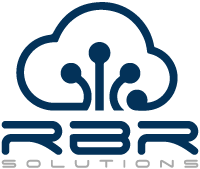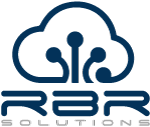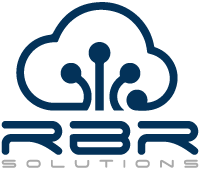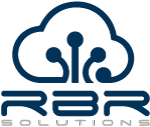What is Cloud Computing? Everything You Need to Know
The cloud is no longer a total mystery. It has become a part of everyday life, with its use becoming increasingly commonplace in digital transformation and modern technology. Despite its prevalence, many of us fail to fully comprehend the implications of the cloud and its capabilities, taking it for granted. This lack of understanding of cloud infrastructure and what it provides limits our potential to benefit from it.
To appreciate the cloud, it’s important to understand cloud computing: What is it and how does it work?

What is Cloud Computing?
A few years ago, the concept of the cloud was met with skepticism and derision. People often reduced it to the idea of “someone else’s computer,” which is a phrase that can be found on many IT professionals’ coffee mugs. Oracle CTO Larry Ellison was also highly critical of the cloud, claiming that it was just a way of redefining what people already do. Despite the criticisms, the cloud has since become an integral part of many businesses and organizations.
To put it simply, cloud computing can be defined as follows:
It is a distributed digital infrastructure that delivers hosted services over the internet.
Types of Cloud Services
The cloud computing service sector has become an incredibly lucrative industry in recent years. According to Gartner, cloud spending is expected to reach $260 billion by the end of 2018, indicating rapid growth in the sector. This is further supported by other industry experts who have highlighted the increasing prevalence of cloud computing in the market. Cloud computing is here to stay and will continue to be a major player in the industry.
According to Wikibon’s Cloud Vendor Revenue Projection Project from 2017, the enterprise cloud is expected to experience a compound annual growth rate (CAGR) of 19 percent from 2016 to 2026. Conversely, traditional infrastructure, on-premises software, and legacy methods of business process outsourcing are projected to have a negative 3 percent CAGR over the same period.
The impact of cloud adoption is already being seen in the three most common models of cloud computing services: software-as-a-service (SaaS), infrastructure-as-a-service (IaaS), and platform-as-a-service (PaaS). These services are allowing organizations to access the latest technology and services without the need for large upfront investments, making them more agile and efficient. The dynamic effects of cloud adoption are being felt across many industries, from healthcare to retail, and are enabling organizations to take advantage of new opportunities and improve their bottom line.
Cloud computing is defined by its ability to provide computing, storage, networking, and integration capabilities as a service, delivered on an on-demand, subscription basis to the customer. This means that the vendor owns the capabilities and provides them as a service to the customer, rather than the customer owning the capabilities themselves. This is a key characteristic of cloud computing, as it allows customers to access the capabilities, they need without the need to purchase and maintain the technology themselves.
These three categories of cloud computing – Software-as-a-Service (SaaS), Platform-as-a-Service (PaaS), and Infrastructure-as-a-Service (IaaS) – are designed to be stacked on top of one another. This means that each of these services can work independently of each other, or in combination. To visualize this, imagine a three-tiered pyramid with SaaS sitting on the top, providing end users with the software they need. PaaS is in the middle, aiding developers and serving integration requirements. Lastly, IaaS is at the base, assisting system administrators with managing their infrastructure.
Software-as-a-Service (SaaS)
Commonly referred to as “on-demand software,” SaaS is the most popularly utilized cloud computing service for businesses. It provides a wide range of applications and services, replacing or augmenting traditional enterprise systems such as ERP, accounting, human resources management, content management systems, supply chain and inventory management, and customer relationship management (CRM) programs. The great advantage of SaaS is that it does not require purchasing an expensive licensed program, allowing users to access numerous cloud applications as and when needed.
Platform-as-a-Service (PaaS)
Platform-as-a-Service (PaaS) is a cloud service that acts as a middleman between Software-as-a-Service (SaaS) and Infrastructure-as-a-Service (IaaS). It provides users with all the necessary tools to create a digital platform, including storage, networking, and virtual servers with the software and hardware required to design, develop, test, implement, manage, and operate applications. Additionally, PaaS allows for the integration, analysis, and sharing of data. In short, PaaS is an all-in-one solution that makes it easier for users to build and manage their digital platforms.
Infrastructure-as-a-service (IaaS)
The Infrastructure as a Service (IaaS) layer provides essential building blocks, database storage, and a virtual platform to customers. It allows them to build cost-saving and scalable IT solutions, while outsourcing the complex and expensive hardware to a third-party cloud vendor. This automation makes it easy for customers to self-provision the storage or processing power of the IaaS platforms. The vendors are responsible for ongoing maintenance, such as system upkeep, backing up data, and ensuring business steadiness.
Types of Cloud Deployments
The way an organization handles and secures its business assets and needs can be seen in how it deploys its cloud service. This is not just a matter of choosing between a private and public cloud, as the emergence of hybrid cloud deployment has added a whole new dimension to the equation. Hybrid cloud deployment combines the benefits of both public and private cloud services, allowing organizations to customize their cloud solutions to meet their specific needs. By leveraging the scalability of public cloud services while keeping sensitive data on a private cloud, organizations can ensure their data is secure while still taking advantage of the cost savings and flexibility of the cloud.
Public Cloud
A public cloud is a type of cloud computing service that is maintained by a third-party Infrastructure as a Service (IaaS) cloud provider. This provider offers servers, storage, and other digital resources that are delivered to customers through the internet. The provider is responsible for any infrastructure and bandwidth costs, meaning that customers only need access to a web browser in order to access the service and manage their accounts. This makes public cloud services an attractive option for businesses and individuals who need access to digital resources without the overhead costs of maintaining their infrastructure.
Pros: Service reliability, cost-effectiveness via economies of scale, maintenance-free, elastic scalability
Cons: Often deemed unsafe for handling sensitive and highly private information; strict security regulations must be followed
Private Cloud
A private cloud is a cloud computing system that is owned and operated solely by an organization, independent of any other enterprises or public platforms. This type of cloud can be maintained in two ways: either the company’s data center is located in-house, or a third-party vendor is hired to host the cloud on a private instance. With a private cloud, organizations have more control over their data, as well as the ability to customize the cloud to meet their specific needs. Additionally, private clouds are more secure than public clouds, as they are not accessible to the public.
Pros: Enhanced agility, accessibility, security
Cons: More maintenance, complex compatibility
Benefits of Cloud Computing
Flexible costs: Cloud computing is revolutionizing the way businesses spend money, as most of the cloud spending is now operational expenditure (opex) instead of traditional capital expenditure (capex). By outsourcing the maintenance of servers to a third-party vendor, companies no longer need to fund a support team to fix any issues that may arise. Furthermore, the upfront costs of infrastructure need such as local server purchases are also significantly reduced. This shift towards cloud computing is allowing businesses to save money and become more efficient.
Improved mobility: The cloud has revolutionized the way we access apps and data. Thanks to the proliferation of mobile devices such as smartphones and tablets, we can access these apps and data from anywhere, anytime. This has been especially beneficial for businesses, as it has allowed employees to become more flexible and efficient with their workflows and customer service. The cloud has truly enabled us to work from anywhere, anytime.
Increased collaboration: Cloud computing is a powerful tool for improving the way businesses work. It allows for data to be easily shared between coworkers and business partners, enabling faster and more efficient workflows. It also facilitates file sharing, allowing remote workers to connect with colleagues and clients quickly and easily. With cloud computing, organizations can access the applications they need to streamline their processes and work more productively.
Future of Cloud Computing
According to the International Data Corporation (IDC), 2018 saw at least half of IT spending go towards cloud-based services, and this number is only expected to increase in the coming years. It is likely that all enterprises worldwide will eventually use some form of cloud service, meaning that most applications and enterprise information flows will be cloud-based soon.
As business IT strategies become more integrated, the cloud will become more than a consumption model.




